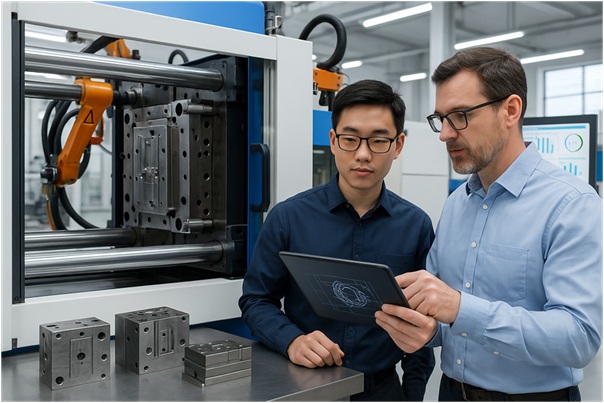In the global race for precision, efficiency, and scale, the role of the injection molding manufacturer is undergoing a strategic evolution. No longer just a supplier of parts, top-performing partners are now active contributors to product development, risk management, and speed-to-market strategies. For companies outsourcing to a china mold maker or any other global production hub, the future of injection molding is no longer just about the mold — it’s about the mindset.
From Supplier to Strategic Partner
Traditional injection molding was largely transactional: a client supplied the part design, and the manufacturer delivered plastic parts to spec. But that model is fading fast. Today’s manufacturers demand more than technical execution—they want insight, agility, and alignment with their broader business goals.
Forward-thinking mold makers are meeting that demand by integrating early into the design process. They offer feedback on DFM (design for manufacturability), suggest material improvements, and even co-develop solutions that reduce cycle times and tooling costs. This early collaboration helps brands avoid downstream delays and redesigns, which can be expensive in both time and budget.
Design Involvement Is No Longer Optional
The sooner a mold maker is involved, the better the outcomes. Smart injection molding partners bring in engineers who can identify issues like undercuts, wall thickness inconsistencies, or venting problems before the design ever reaches the mold shop. That kind of input isn’t just helpful — it’s now essential for reducing prototyping rounds and keeping production on schedule.
This shift in approach transforms the dynamic between brand and manufacturer. It’s no longer just a question of “Can you mold this?” but “Can we improve this together?” The result is more functional products, shorter lead times, and leaner production.
Real-Time Transparency Is the New Standard
Today’s best injection molding partnerships thrive on clear, ongoing communication. In many cases, manufacturers are offering real-time dashboards, production trackers, and integrated quality reports. These tools help clients monitor critical data points—such as part tolerance deviations, production throughput, and tool maintenance schedules—without waiting for emails or updates.
This visibility builds trust. Instead of constant status checks or reactive problem-solving, customers stay in the loop proactively. For global buyers, especially those working with overseas suppliers like a China mold maker, this transparency bridges distance and time zones.
Materials and Sustainability Matter More Than Ever
As industries face pressure to cut waste and reduce environmental impact, injection molding is shifting accordingly. Leading mold makers are now offering bioplastics, recycled resins, and even closed-loop systems that reclaim and reuse scrap.
Smart manufacturers are also helping clients select better materials—not just greener, but smarter: UV-resistant, flame-retardant, FDA-compliant, or antimicrobial depending on the end-use. These recommendations often surface in early development stages, where they have the biggest payoff.
Flexibility Beats Volume
While low cost and high volume were once the dominant drivers, agility is now a competitive advantage. Many companies today seek shorter production runs, faster tooling iterations, and the ability to pivot quickly.
Injection molding partners who can scale up or down, switch between materials, and adjust mold configurations on demand are becoming indispensable. This flexibility isn’t just helpful for startups—it’s a strategic advantage for global brands managing diverse SKUs and unpredictable demand.
Smart Manufacturers Go Beyond the Mold
Ultimately, the injection molding manufacturer of today isn’t just building molds—they’re helping build better products and stronger supply chains. The smartest mold makers act as quiet extensions of their clients’ teams, blending engineering expertise with business acumen.
They anticipate challenges before they arise. They guide decisions that affect cost, quality, and speed. And most importantly, they align their tools and timelines with their clients’ goals.
As competition tightens and markets evolve, companies that invest in this kind of partnership aren’t just buying a service—they’re buying a smarter way to manufacture. And in a landscape shaped by speed and precision, that makes all the difference.
Refresh Date: August 21, 2025




